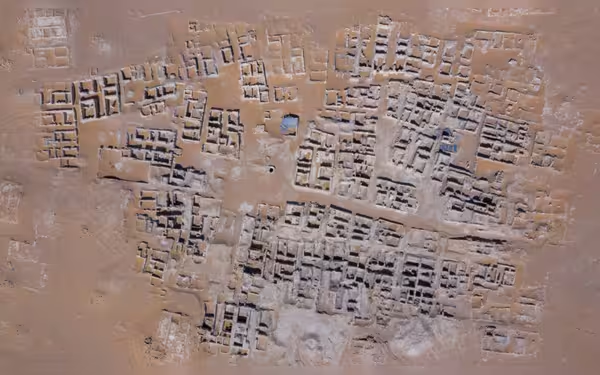Saturday, November 16, 2024 07:56 PM
Latest Archaeological Discoveries at Al-Faw, Saudi Arabia
- Al-Faw recognized as UNESCO World Heritage Site.
- Excavations reveal ancient trade routes and cultural exchanges.
- Rock art offers insights into ancient inhabitants' lives.
 Image Credits: arabnewspk
Image Credits: arabnewspkExperts unveil significant archaeological findings at Al-Faw, now a UNESCO World Heritage Site, highlighting ancient trade routes and cultural exchanges.
In a significant development for the field of archaeology, experts convened in Riyadh to unveil the latest findings from the Al-Faw archaeological site, recently recognized as a World Heritage Site by UNESCO. This site, located in Saudi Arabia, is not just a treasure trove of artifacts; it is a window into the ancient world, revealing the intricate web of trade routes and cultural exchanges that once flourished in the region.
Al-Faw, which was added to UNESCO’s prestigious list in July, marks the eighth site in Saudi Arabia to receive such recognition. This acknowledgment highlights the importance of Al-Faw not only to the Kingdom but also to the global community. The Saudi Heritage Commission organized the conference, where experts shared insights into how recent excavations have transformed our understanding of ancient civilizations.
Ajab Al-Otaibi, the director of the Archaeological Documentation and Research department, emphasized the significance of the discoveries made at Al-Faw. He stated, "The most recent excavations have revealed a complex network of trade routes and cultural exchanges that connected Al-Faw with other kingdoms in the Arabian Peninsula and beyond." This revelation is crucial as it reshapes our understanding of the social and economic dynamics that existed in the region during ancient times.
Moreover, the findings at Al-Faw provide fresh insights into the trade and communication networks that were vital for the communities that inhabited the area. These discoveries help paint a clearer picture of the lives of the people who lived there, their interactions, and their contributions to the broader tapestry of history.
Noura Al-Khamees, the general manager of the World Heritage Sector at the commission, expressed her enthusiasm regarding UNESCO's recognition of Al-Faw. She remarked, "Having Al-Faw on UNESCO’s World Heritage List confirms the importance of the site to the world." This statement underscores the site's historical significance and the effective management and conservation efforts led by Saudi Arabia.
During the conference, one of the focal points was the rock art and inscriptions found at Al-Faw. Experts noted that these artifacts offer valuable insights into the daily lives and beliefs of the ancient inhabitants. The attendees were also invited to participate in field visits to witness the ongoing preservation efforts firsthand, allowing them to experience the rich history that Al-Faw has to offer.
Al-Faw is not merely an archaeological site; it symbolizes Saudi Arabia’s dedication to preserving and sharing its cultural heritage with the world. Located in Wadi Ad-Dawasir, approximately 700 kilometers southwest of Riyadh, Al-Faw is situated at the crossroads of the Empty Quarter desert and the Tuwaiq mountain range. With around 12,000 archaeological artifacts and a history of human habitation spanning over 6,000 years, Al-Faw stands as a testament to the region's rich past.
The discoveries at Al-Faw not only enhance our understanding of ancient trade and cultural exchanges but also serve as a reminder of the importance of preserving our historical sites. As we continue to uncover the secrets of our past, it becomes increasingly clear that these sites are invaluable resources for learning about the complexities of human civilization. The ongoing efforts to protect and promote Al-Faw will undoubtedly inspire future generations to appreciate and engage with their cultural heritage.













